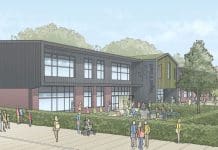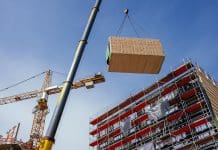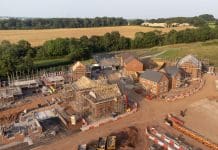Research by Homes for Scotland (HFS) and the Fraser of Allander Institute has revealed that housing completions reached 20,000 in 2018, but a further 25,000 homes are needed each year
Homes for Scotland (HFS) has commissioned research by the Fraser of Allander Institute. This research has unveiled that housing completion growth has varied across Scotland and that there are a number of challenges and opportunities for the industry in coming years.
In 2018, housing completions exceeded 20,000 for the first time since the recession. HFS itself estimates that 25,000 homes are needed each year to keep up with housing demand, not including the 80,000 shortfall in the supply of housing since 2008.
Whilst this growth is encouraging, given economic and political uncertainty, it remains fragile – a point Fraser of Allander reinforces with the fact that between 2008 and 2018 the overall economy saw 3% growth, a stark contrast to the 20% seen in the 10 years prior to 2008.
Nicola Barclay, chief executive of HFS, said: “It is absolutely vital that steps are taken to ensure housing demand can be met, and to avoid exacerbating the existing undersupply of homes. Homebuilding provides huge social and economic benefits and is a key area for growth in Scotland.
“Increasing supply to pre-recession levels of 25,000 homes per year would generate a further 19,000 jobs, £0.5bn more in economic output and over £25m in local infrastructure enhancements.”
The Fraser of Allander report reveals there are significant variations in the level of housing completions across different areas of the country. Much of the growth has been driven from activity in the east of Scotland, consistent with wider trends across the Scottish economy.
House price growth is also inconsistent across the country. Whilst prices in Scotland have continued to grow over the last year, rising 1.3% to January 2019, the level of growth is much stronger in certain areas like Edinburgh (6% over the year), in comparison to much lower levels of growth in other areas of the country, such as Aberdeen (-7.9%).
The Fraser of Allander research considers a number of “grand challenges” for housing: population change, economic growth, technological change, climate change, productivity and tackling inequalities.
Professor Graeme Roy of the Fraser of Allander Institute, said: “The Scottish economy continues to show a positive but relatively fragile level of confidence.
“House prices continue to grow, and the construction sector has picked up in recent years.
“Brexit uncertainty looks set to continue with the departure date now in early 2020. This continued uncertainty will impact negatively on investment and consumer confidence.
“It is important not to lose sight of the major challenges and opportunities that are coming down the line and which will shape the future direction of our economy – and the demand for housing – far more than any short-term uncertainty or constitutional change.”
If the increase in housing completions seen in 2018 is to be maintained, HFS believes that encouraging more builders into the market is crucial, with many companies lost as a result of the 2008 recession, particularly smaller ones with fewer resources and limited routes to finance.
HFS has been working alongside the Scottish Government and Heads of Planning Scotland, to develop solutions and prioritise the action required to support and grow the small-scale homebuilder sector.
Michael Crawford, managing director for JS Crawford Contracts (Borders) and Rural Renaissance, added: “For too long, SME builders have been struggling to provide the homes that Scotland needs, especially in more rural areas.
“With such investment and employment opportunities vital to sustaining communities, this report not only raises the particular issues SME builders face but also provides the solutions to address them.”














